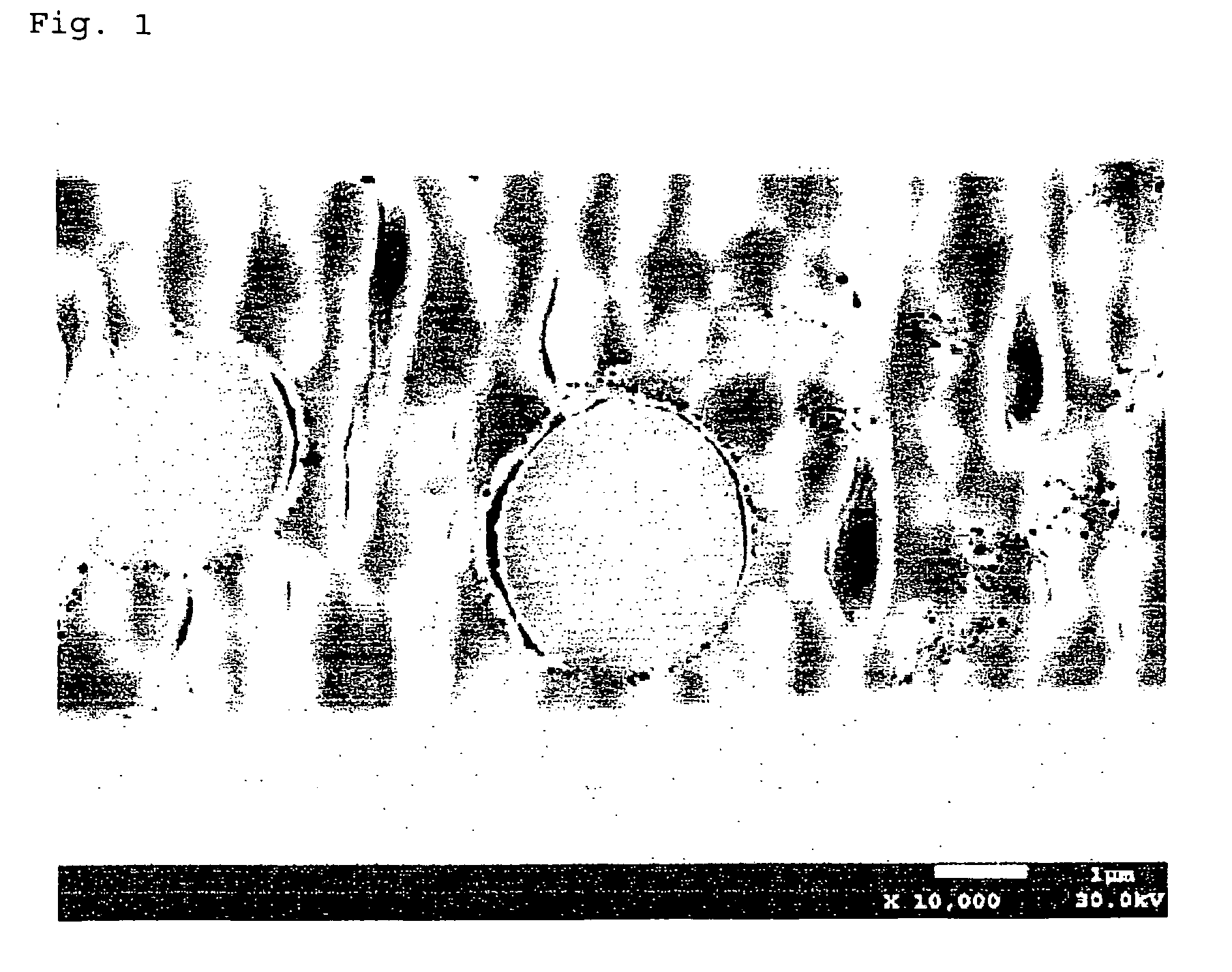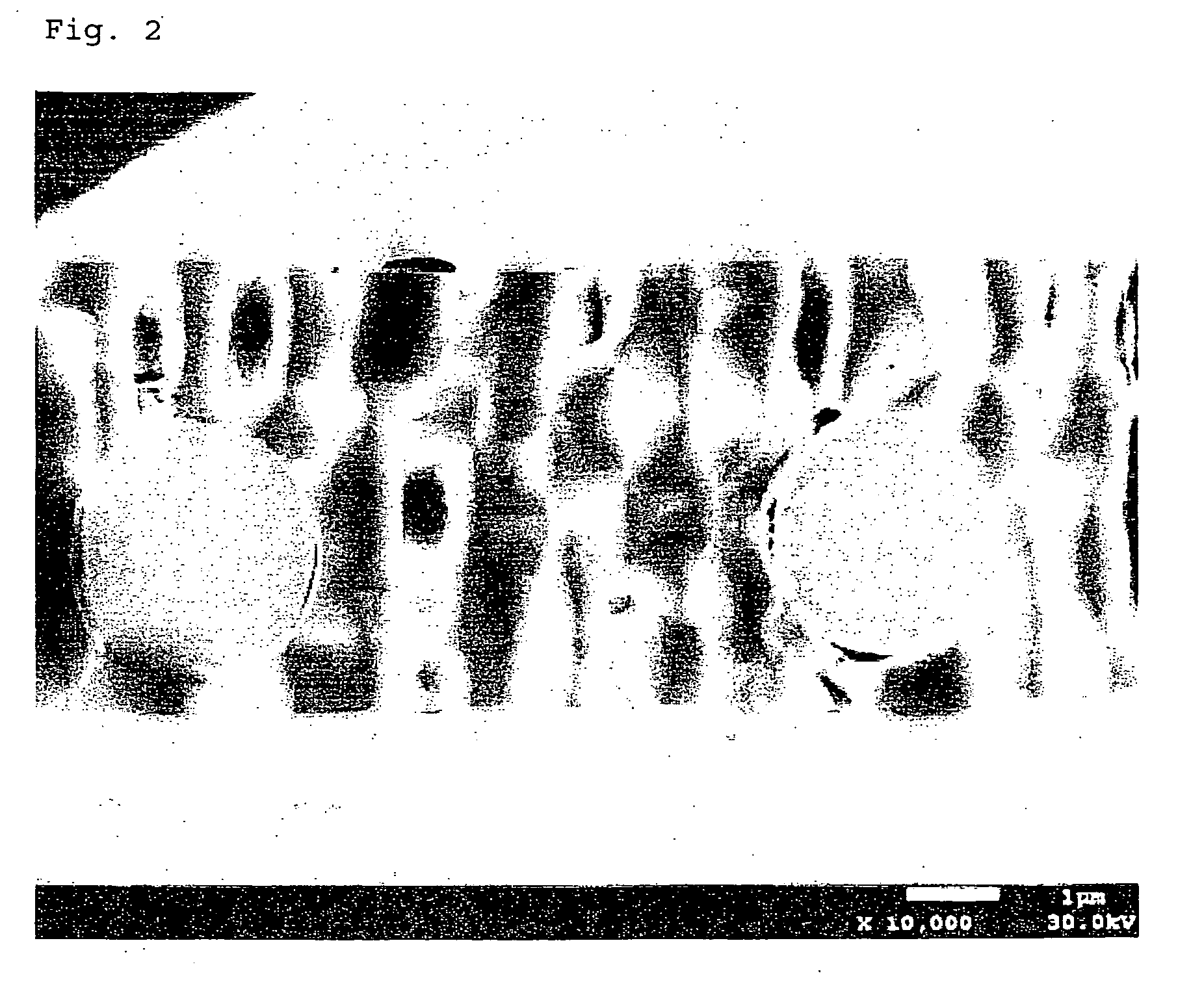Anti-glare material and optical layered product
a technology of optical layers and anti-glare, applied in the direction of roads, instruments, traffic signals, etc., can solve the problems of reducing contrast, affecting the effect of black white image rendering, and affecting the visibility of displays, so as to reduce the number of coating processes, and improve the effect of quality display
- Summary
- Abstract
- Description
- Claims
- Application Information
AI Technical Summary
Benefits of technology
Problems solved by technology
Method used
Image
Examples
example 1
[0152]The resin layer components listed in Table 1 for Example 1 were agitated with a disper for one hour and applied by die head coating method to one side of a translucent substrate made of a TAC film 80 μm in thickness (total transmittance 92%). After drying at 100° C. for one minute, the film was abutted against the surface of an emboss processing roll (surface fluorine treatment) provided with irregularity shape through photolithography so that the distribution of slope angles may show A=0.1 and B=1.0, nipping with a back-up roll so that the coated surface may entirely contact the surface, immediately followed by ultraviolet irradiation using a 160 W metal halide lamp from the side of the translucent substrate (irradiation distance 10 cm, irradiation time 30 seconds) while the coated surface was in contact with the emboss processing roll. Subsequently, ultraviolet irradiation was carried out to that side of the resin layer having the irregularity shape in nitrogen atmosphere un...
example 4
[0179]To 500 parts of NanoTech® alumina in alcohol dispersion by C. I. Kasei Co., Ltd. (particle size 31 nm, total solid content 15%) as a dispersion liquid of metal oxide fine particles, five parts of KBE-903 (γ-aminopropyltriethoxysilane) by Shin-Etsu Chemical Co., Ltd. was added as a surface modifier and agitated and mixed using a homogenizer at room temperature for ten minutes. Thereafter, continuing agitation, 0.2 part of triethylamine was diluted by ten-fold with methanol and added dropwise and agitation was continued at 60° C. for 12 hours to fully react the surface modifier. Next, the dispersion liquid was transferred to an ultrafiltration device (MQLSEP FSIO-FUS 1582 by Daicen Membrane Systems Ltd., membrane area 5 m2, made of polyether sulfone, molecular cutoff 150,000, length 1129 mm×diameter 89 mm) to filter off unreacted surface modifier. The liquid was pumped so that the filtration pressure was 1.6 kg / m2 and pure isopropanol was fed to the outside of the membrane. Filt...
example 5
[0181]In a similar manner to Example 4 except that the coating material for optically functional layers was replaced with the liquid mixture noted in Table 4 and the thickness of the optically functional layer was 9.0 μm, the optical layered product of Example 5 was obtained.
PUM
| Property | Measurement | Unit |
|---|---|---|
| slope angles | aaaaa | aaaaa |
| slope angles | aaaaa | aaaaa |
| particle size | aaaaa | aaaaa |
Abstract
Description
Claims
Application Information
 Login to View More
Login to View More - R&D
- Intellectual Property
- Life Sciences
- Materials
- Tech Scout
- Unparalleled Data Quality
- Higher Quality Content
- 60% Fewer Hallucinations
Browse by: Latest US Patents, China's latest patents, Technical Efficacy Thesaurus, Application Domain, Technology Topic, Popular Technical Reports.
© 2025 PatSnap. All rights reserved.Legal|Privacy policy|Modern Slavery Act Transparency Statement|Sitemap|About US| Contact US: help@patsnap.com



